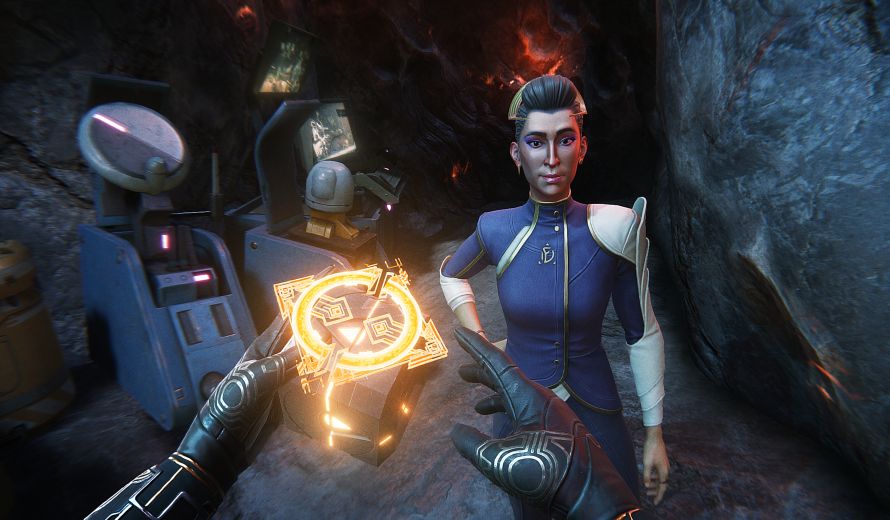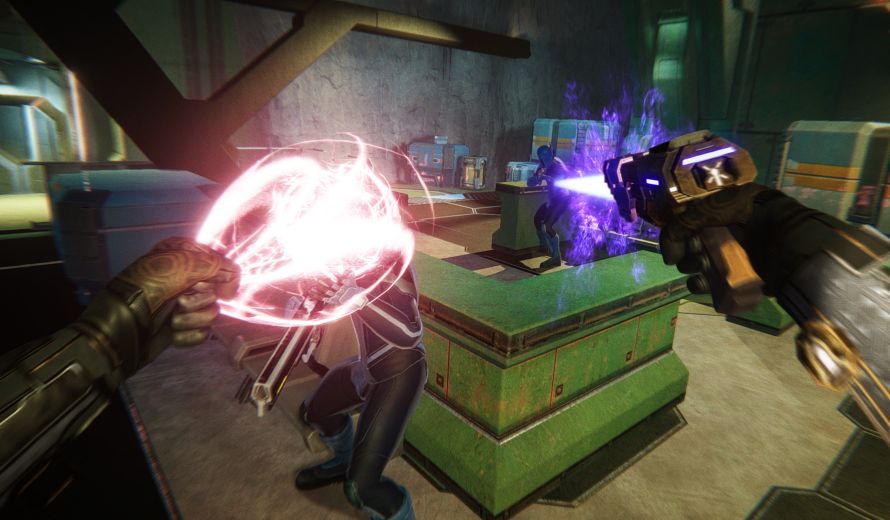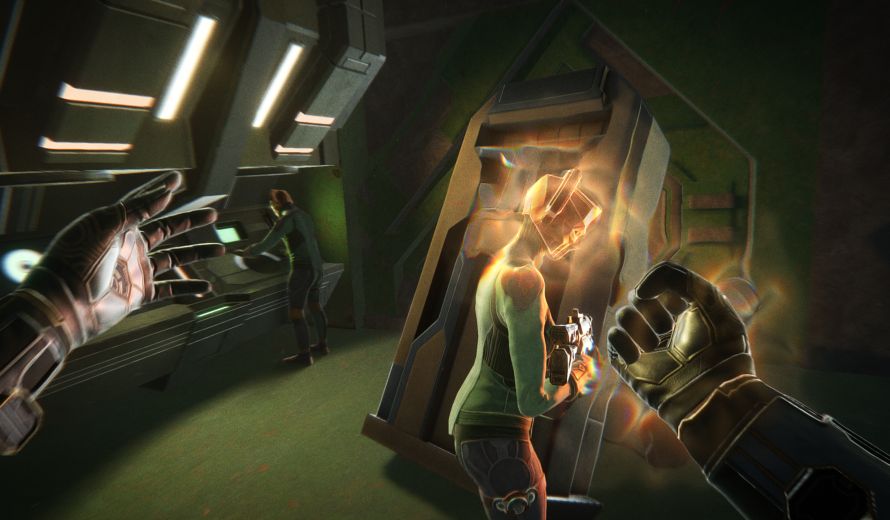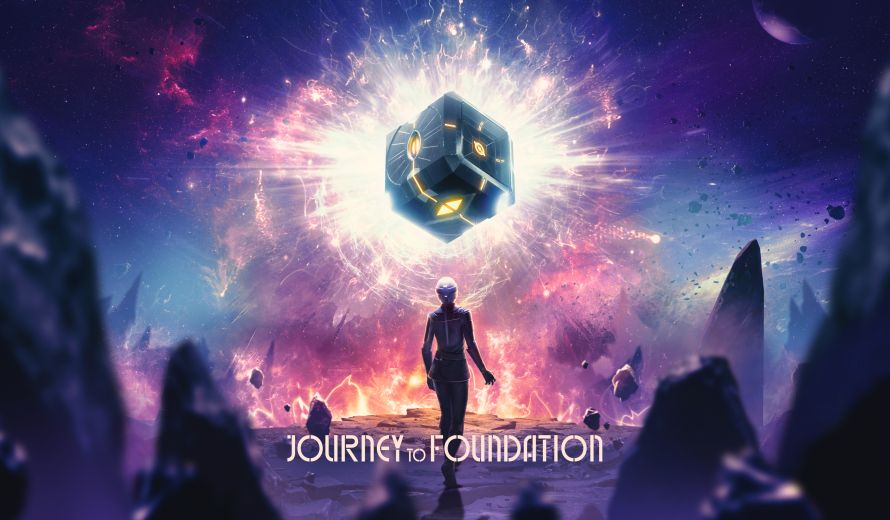Journey to Foundation Review
Journey to Foundation from Archiact Interactive is a galaxy spanning virtual experience. Its roots come from the Foundation series of books written by SF Giant, Isaac Asimov. This gives the game an enormous advantage because it gives them the entire Milky Galaxy as an immense creative sandbox to play in.
You play the game as Agent Ward, an agent of the Commission of Public Safety. This is a branch of the Galactic Empire that maintains order and the authority to do so by any means necessary. The Commission sends you to the edge of the galactic empire to investigate reports of deserters.
As with all good stories, the initial event escalates into a kidnapping and then into a big conspiracy. A conspiracy that could end the Galactic Empire. The game takes you on a journey that involves visiting several locales and eventually ending up at the titular location.
Given the immense amount of available source material, Archiact has put the game’s focus on the narrative. Each character you encounter opens up a dialog UI that is a tad clunky. You navigate through the options with eye tracking, which is pretty cool. However, once you make a selection, you must touch it to complete the selection.
Illusion of Choice
That all sounds slick, but what makes the dialog clunky is three fold. On the technical side, sometimes the choice made is not the one you selected. On the gameplaying side, sometimes the gameplay will not advance unless you make the proper choices. This means reloading a checkpoint and doing the conversation over again.
Another gameplaying element which hinders dialogs is Ward’s Mentalist talent. As a mentalist, you can detect the emotions of NPCs, a la Deanna Troi from Star Trek: The Next Generation. The drawback with the talent is the game shows it as an alternative to handling NPC interactions. However, its use is mandatory. You won’t be able to advance the story line in the situations where it is available.

Other abilities include a firearm, a hacking probe, a welding tool, and chameleon technology that allows you to mimic other NPCs. They all work satisfactorily, but again, their use at specific events is mandatory. The game does not have the depth to allow for multiple ways to address a situation.
Hacking is very reminiscent of the 3D puzzles found in Half Life: Alyx. You manipulate 3D cubes to trace out connections to override locks. It’s not bad, but not as clean as Alyx’s implementation. Occasionally you will also have to transverse some climbing sections. These sections are short and work with no issues.
Hail Haptics!
Something unique to the game is the use of physical gestures. Often when meeting with NPCs, they greet you with a salute of some type. You must respond in kind. The same issue happens here too. If you don’t return the gesture, you can’t progress. Also, it’s very easy to miss the gesture if your attention is elsewhere.
Hats off to Archiact for making full use of the PSVR 2 haptics. When you use the Mentalist abilities, the headset haptics rumble in accordance with you how close you are when reading or manipulating an NPC’s emotions. Each weapon has its own feedback. You’ll also get haptics when hit by gunfire or your health gets low.

Visually, the game uses a stylized approach to characters and the environments. It strongly echoes the visual style used in the Saints and Sinners games. Textures vary in quality with the environment and objects immediately around you are of higher quality. However far away vistas and outer space scenes are of a noticeably lower quality.
Another noticeable aspect of the environments is how constrictive they are. There is little to no room to explore. The feeling of being herded down a cattle chute is very strong. The game makes use of eye tracking. Not only is it used to navigate menus but also with NPCs. Their gaze tracks realistically as you move around them. It’s a small thing but adds to the immersion.
Excellent Narrative
Much of what I have described won’t entice one to play the game. However, the aforementioned narrative is excellent. The story takes a while to get going, but once it does, it totally engaged me. The twists and turns are great and present you with some tough choices.
One of my favorite sections of the game come with the Encyclopedia Galactica. This is accessible between game levels. Here the menu navigation with eye tracking is fantastic. You can learn much about the Empire, the characters, planets, and history. All of which adds to one’s investment.

Another strong feature of the game is the audio. This starts with the voice acting. All the dialog is voiced and is excellent. This is vital for a game which is so heavily story focused. 3D audio is well implemented and adds to the immersion. To top it all off is the soundtrack, which soars epically during the appropriate moments.
Journey to Foundation attempts to marry a narrative-heavy story together with the more traditional aspects of game play. The net effect is a game that offers a variety of game play elements but is not a master of any of them. Everything works, but they could all use some refinement to make them more user-friendly. You’ll find other games that do them better than this game.
Great Story, Acceptable Gameplay
However, if you are into good storytelling, with a detailed back story, good voice acting, and are patient with the story to kick in; Journey to Foundation is the ticket. The game should take between six to eight hours to complete if you focus on pushing through the story. However, if you stop to peruse the encyclopedia it will extend your play through time.
Journey to Foundation is available on all the major VR platforms: PSVR 2, Quest 2, Quest 3, and PCVR.
***Journey to Foundation PSVR 2 code provided by the publisher***
The Good
- Rich and detailed universe
- Good story
- Excellent spoken dialog
The Bad
- Clunky Conversation UI
- Confined Environments
- Underwhelming gun play

